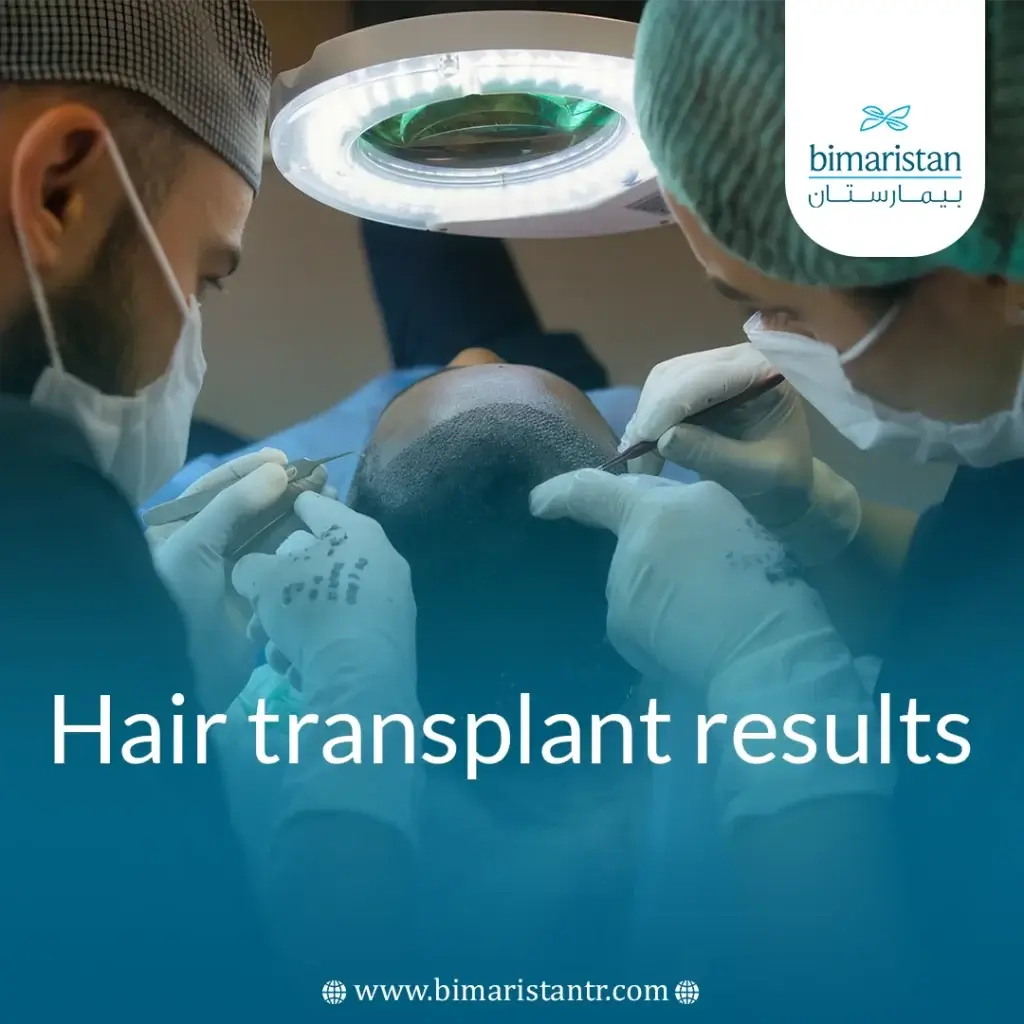Hair transplant is a widely sought-after cosmetic solution for hereditary baldness and hair loss, designed to restore natural hair density and enhance aesthetic appeal. Thanks to advanced methods like FUE and DHI, hair transplant results have become increasingly precise and lifelike. Still, many patients remain curious about when these results begin to appear and how hair growth progresses through each stage after the procedure.
Hair transplant results timeline
The following table shows the time period for each stage after a hair transplant:
| Time period | Details |
|---|---|
| First week | The scalp may be swollen, red, and painful during the first week, and scabs form around the transplanted follicles, which often fall off within 7 to 10 days. Gently wash the hair after 48 hours, and the swelling and redness will begin to subside by the end of the week. |
| Week 2-4 | Known as the “shock shedding phase”, most of the transplanted hair falls off during this period. This is a natural phase caused by the follicles entering a resting phase. |
| Month 2-3 | New hair begins to grow from the transplanted follicles, usually thin and colorless at first, then becomes thicker and stronger over time as blood flow begins to nourish the follicles, preparing them for growth. The doctor recommends taking supplements to support growth. |
| Month 6-9 | Hair becomes thicker, fills the gaps more distinctly, and styling options expand. It’s important to maintain your hair care routine for improved and quicker results, while the hairline gradually begins to take shape. |
| Month 12-18 | Most people reach the final density and achieve a natural final look. |

Factors affecting hair transplant results
- Age and genetic factors: Younger patients or those with genotypes associated with thicker hair often experience faster, more effective growth after a hair transplant.
- Adherence to post-transplant instructions: Avoid sunlight, scratching the scalp, and ensure proper hair washing. Use minoxidil spray to support hair follicles and promote growth.
- Scalp condition: Inflammation or irritation of the scalp, as in certain skin conditions such as alopecia, may delay or impair the growth of transplanted hair.
- The expertise of the doctor and the skills of the medical team: Despite technological advances, transplant outcomes remain highly dependent on the surgeon. It is essential to choose a specialized doctor who understands the mechanisms of hair loss and has extensive experience in hair transplant for natural results.
- The quality of the original hair and the density of the donor area: The denser and stronger the donor area is, the better the chances of success. If the donor area is weak or suffers from hair loss, this may negatively affect the final results.
Hair transplant results according to the method used
Hair transplant results differ based on the method used, as illustrated in the following table comparing the outcomes of FUE and DHI methods:
| Comparison | FUE method | DHI technique |
|---|---|---|
| Transplantation and density results | Good density and natural results, suitable for large areas, and gives a good overall appearance. | Higher density, more precise transplantation, and better orientation of each follicle, resulting in a fuller, more symmetrical appearance. |
| Recovery time | Fast, it takes a day or two | Slightly faster than FUE |
| Operation time | Relatively shorter, 6-8 hours divided over several sessions | Longer, it can take up to 10 hours and is divided into several sessions |
| Hair appearance time | Starts from the third month gradually | Often starting from the third month, in other cases as early as the second month |
| Completeness of results | Between months 12 and 18 | Between months 12 and 18 |
What can negatively affect hair transplant results
There are a number of factors that negatively affect hair transplant results:
- Smoking, alcohol, or stress: These reduce the blood supply to the new follicles, which reduces the success rate of the procedure.
- Skin diseases of the scalp: Alopecia areata, psoriasis, seborrheic dermatitis negatively affect the scalp by delaying the growth of the follicles.
- Lack of competence and experience of the doctor: One of the most important reasons for the failure of the procedure is that they may not handle the follicles accurately or choose a suitable angle for hair transplant.
- Adherence to post-transplant medical care: These are the rules set by the doctor after a hair transplant, such as
- Sleep in a specific position to minimize swelling
- Avoid sweating or exercising
- The use of prescribed medications, such as antibiotics
Tips to speed up and maximize hair transplant results
To speed up and maximize recovery, there are several helpful tips and procedures to adhere to:
- Eat a high-protein diet
- Drink adequate amounts of water
- Choose a shampoo that is suitable for your specific hair type
- Avoid thermal styling tools
- Protect the scalp from the sun’s rays
- Follow all the doctor’s instructions and do regular medical follow-ups
- Take supplements that support hair health, such as vitamin D, iron, zinc, and biotin
Finally, hair transplant results begin to appear gradually from the third month after the procedure and typically reach completion between months 12 to 18, delivering a natural look and lasting density. However, the quality of these results depends heavily on proper medical care and avoiding harmful factors like smoking or scalp conditions. By following the doctor’s guidance and maintaining a healthy lifestyle, the recovery process can be improved, leading to optimal hair transplant results.
Sources:
- Patel, D. P., & Swanson, K. L. (2020). Hair Transplantation. In StatPearls. StatPearls Publishing.
- A.D.A.M., Inc. (2023, March 2). Hair transplant. In MedlinePlus Medical Encyclopedia. U.S. National Library of Medicine. Retrieved from
